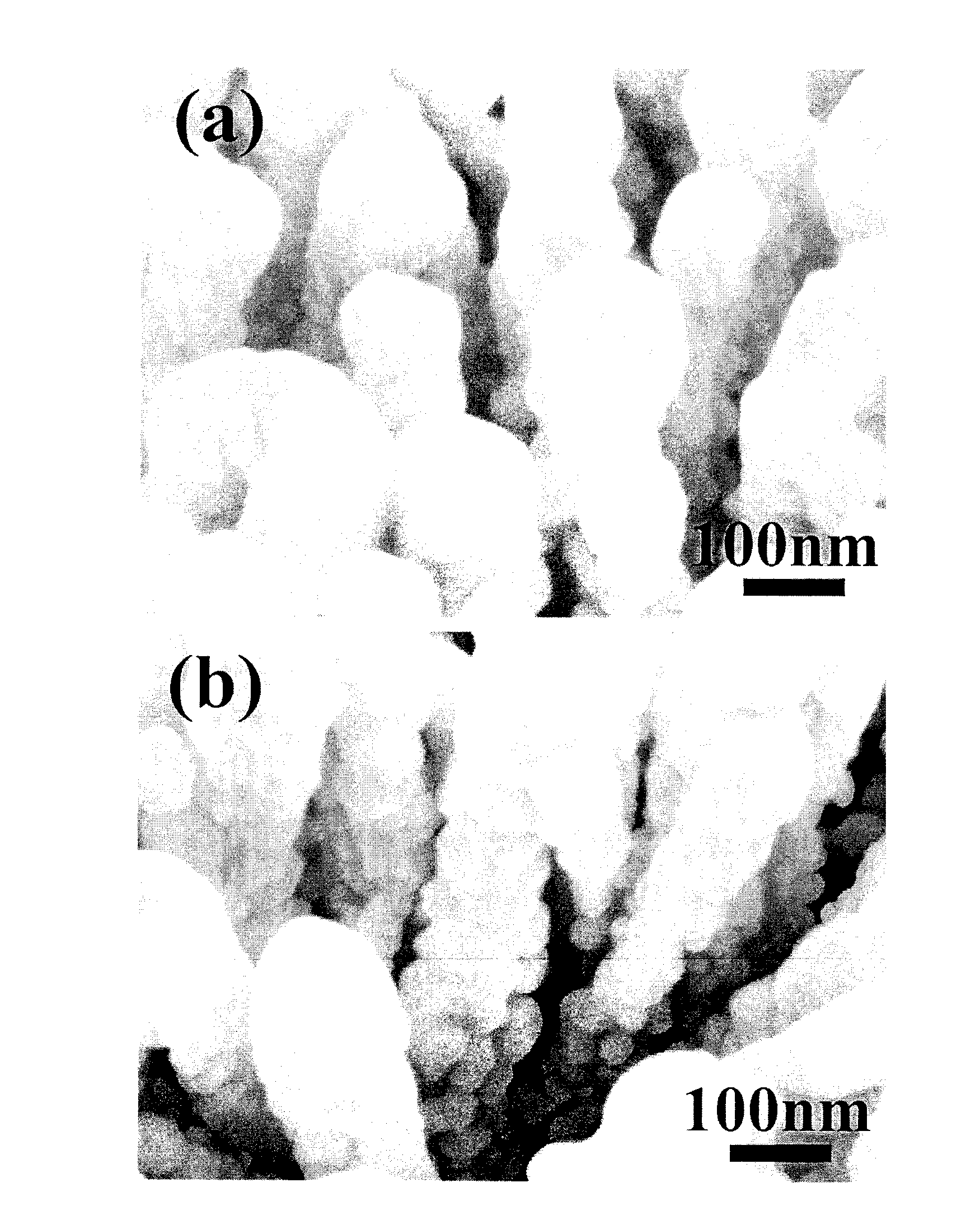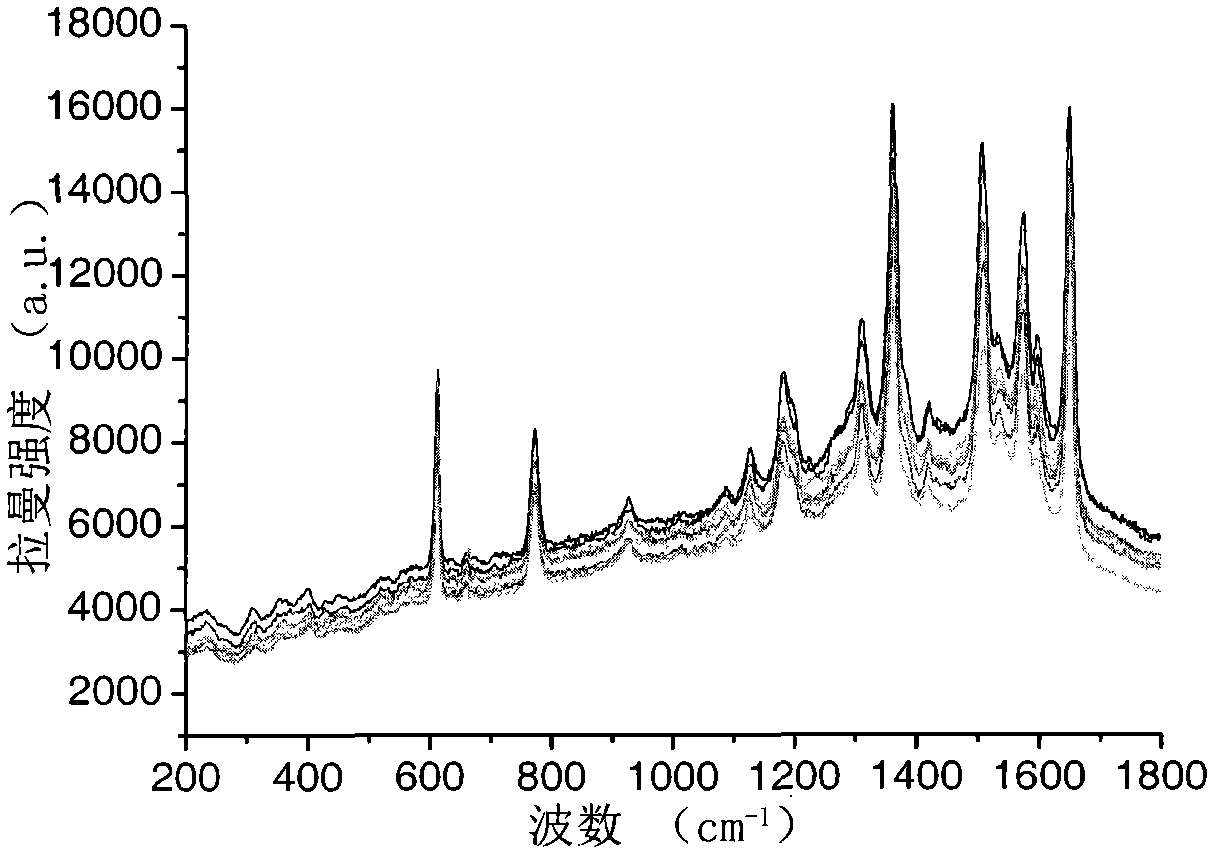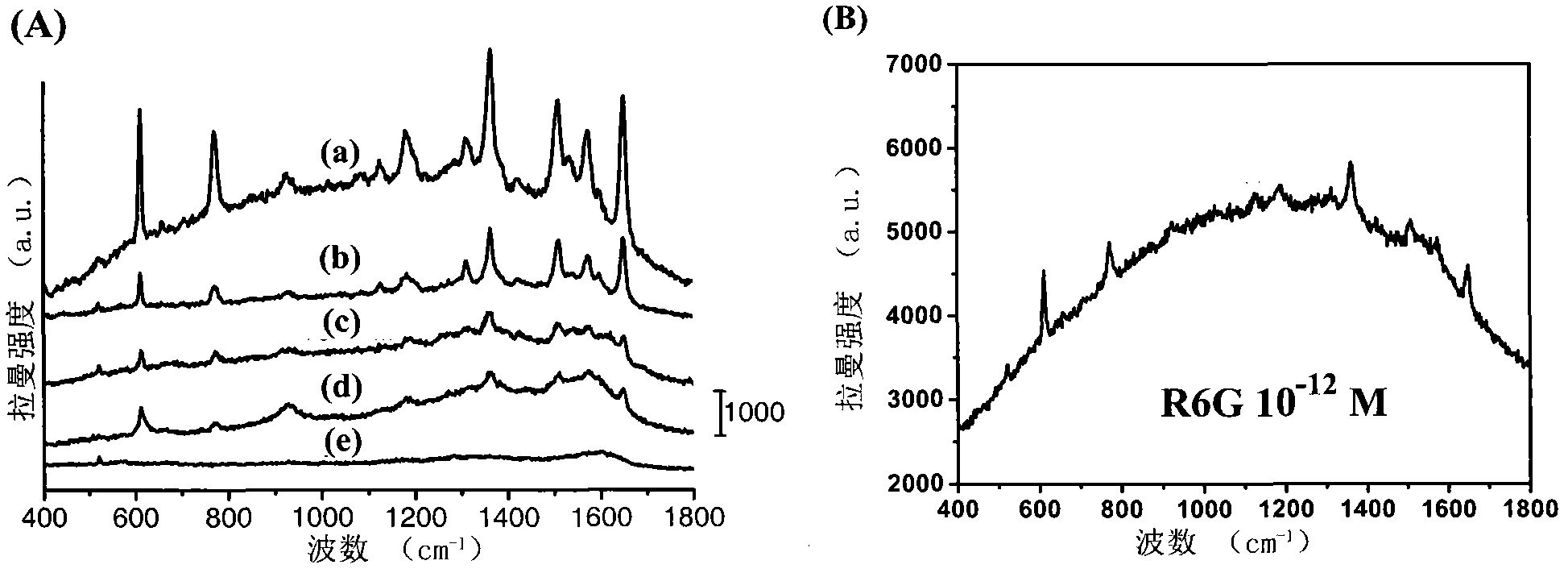Silver nanoparticle-modified zinc oxide nanorod array and preparation method and application thereof
A technology of zinc oxide nanorods and silver nanoparticles, which is applied in the process of producing decorative surface effects, decorative arts, gaseous chemical plating, etc., can solve the problem that surface-enhanced Raman scattering active products and silver nanoparticles cannot be obtained. It can solve the problems of easy and ineffectiveness, and achieve the effect of eliminating the oxidation of silver nanoparticles, scientific preparation method and low cost.
- Summary
- Abstract
- Description
- Claims
- Application Information
AI Technical Summary
Problems solved by technology
Method used
Image
Examples
Embodiment 1
[0030] The concrete steps of preparation are:
[0031] Step 1, first coating the zinc acetate ethanol solution with a concentration of 10mmol / L on the substrate, cleaning and dispersing it with ethanol after drying; wherein, the substrate is a silicon wafer. Then, the substrate with zinc acetate placed thereon was thermally decomposed at 300° C. for 24 minutes to obtain a substrate covered with a zinc oxide seed layer.
[0032] Step 2, place the substrate covered with the zinc oxide seed layer in a zinc nitrate ammonium complex solution with a temperature of 75°C and a concentration of 0.03mol / L, using it as the cathode and the graphite sheet as the anode. 0.3mA / cm 2 Under electrodeposition for 5 hours, a substrate with an array of zinc oxide nanorods with sharp tops formed on it was obtained; wherein, the preparation of the zinc nitrate ammonium complex solution was to gradually inject ammonia into the stirred zinc nitrate solution, until it changes from cloudy to clear.
...
Embodiment 2
[0035] The concrete steps of preparation are:
[0036] Step 1, first coating the zinc acetate ethanol solution with a concentration of 13mmol / L on the substrate, cleaning and dispersing it with ethanol after drying; wherein, the substrate is a silicon wafer. Then place the substrate with zinc acetate on it at 320° C. for 23 minutes to thermally decompose, repeat the above-mentioned coating, dispersion and thermal decomposition process for 2 times, and then obtain the substrate covered with the zinc oxide seed layer.
[0037] Step 2, place the substrate covered with the zinc oxide seed layer in a zinc nitrate ammonium complex solution with a temperature of 79°C and a concentration of 0.04mol / L, using it as the cathode and the graphite sheet as the anode, at a current density 0.4mA / cm 2 After 4.5 hours of electrodeposition, a substrate with an array of zinc oxide nanorods with sharp tops on it was obtained; wherein, the preparation of the zinc nitrate ammonium complex solution ...
Embodiment 3
[0040] The concrete steps of preparation are:
[0041] Step 1, firstly coating the zinc acetate ethanol solution with a concentration of 16mmol / L on the substrate, and cleaning and dispersing it with ethanol after drying; wherein, the substrate is a silicon wafer. Then place the substrate with zinc acetate on it at 335° C. for 22 minutes and repeat the process of coating, dispersion and thermal decomposition for 3 times to obtain a substrate covered with a zinc oxide seed layer.
[0042] Step 2, place the substrate covered with the zinc oxide seed layer in a zinc nitrate ammonium complex solution with a temperature of 83°C and a concentration of 0.05mol / L, using it as the cathode and the graphite sheet as the anode, at a current density 0.5mA / cm 2 Under electrodeposition for 4 hours, a substrate with an array of zinc oxide nanorods with sharp tops formed on it was obtained; wherein, the preparation of the zinc nitrate ammonium complex solution was to gradually inject ammonia ...
PUM
| Property | Measurement | Unit |
|---|---|---|
| Particle size | aaaaa | aaaaa |
| Particle size | aaaaa | aaaaa |
Abstract
Description
Claims
Application Information
 Login to View More
Login to View More - R&D
- Intellectual Property
- Life Sciences
- Materials
- Tech Scout
- Unparalleled Data Quality
- Higher Quality Content
- 60% Fewer Hallucinations
Browse by: Latest US Patents, China's latest patents, Technical Efficacy Thesaurus, Application Domain, Technology Topic, Popular Technical Reports.
© 2025 PatSnap. All rights reserved.Legal|Privacy policy|Modern Slavery Act Transparency Statement|Sitemap|About US| Contact US: help@patsnap.com



